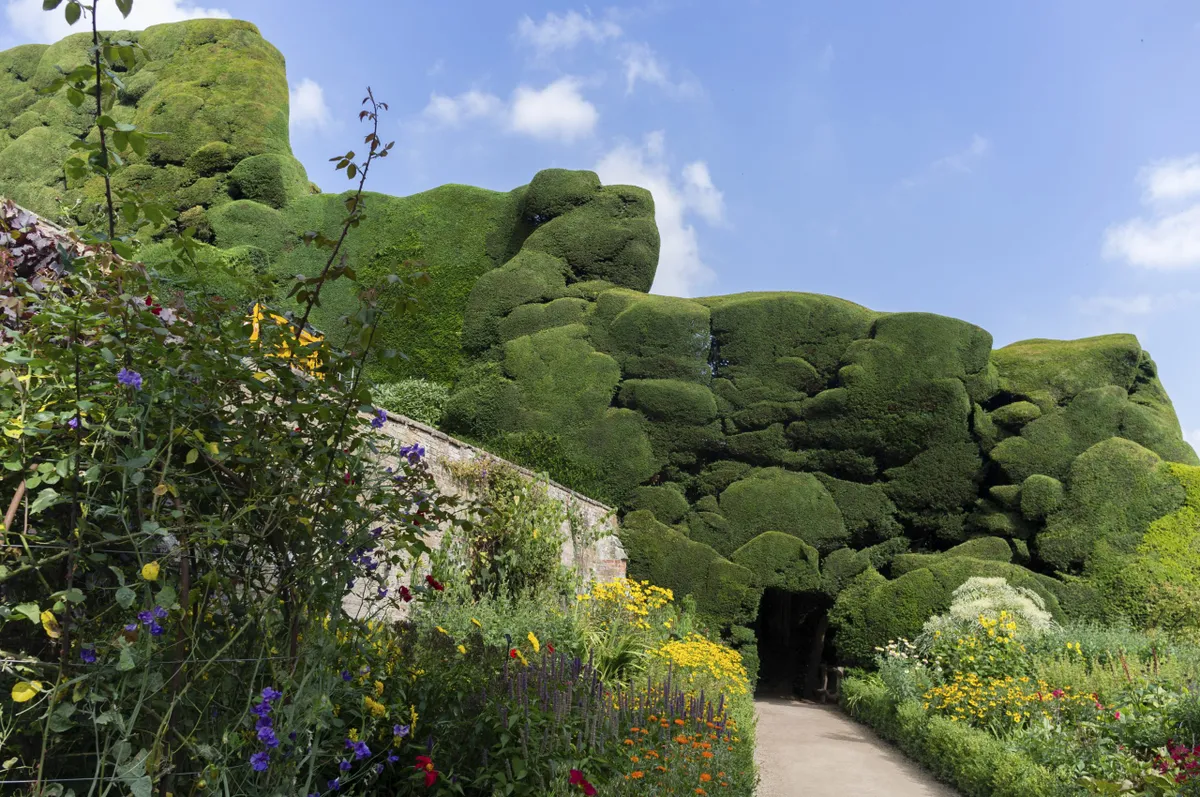Where would our gardens be without hedges? They are our boundaries, our walls, our dividing screens, our guardians, our supports and our skeletons. In spring
they burst into fresh clean growth, in summer they shelter nesting birds and provide a solid background for our borders, and in winter they carry the snow and give architecture to our frosted gardens. To answer my own question, therefore, we would be up the creek and in the soup.
The history of the hedge is one of protection rather than ornamentation, beginning when man evolved enough to keep animals. It was generally considered
a bad idea to have your sheep/goats/cattle/horses/children wandering off unchallenged, so the field boundary hedge was invented. Initially, it was formed from thorny branches cut from nearby trees, but in time this evolved into a living hedge that could be laid to make a barrier through which even the most devious sheep could not escape. This idea was eventually extended from the field to the domestic garden.
Not many people visit gardens just to look at hedges, but it can be worth checking out the opposition.

For eccentricity, there’s Rockingham Castle’s elephant hedge (rockinghamcastle.com), and for sheer scale you can’t beat the monumental 14m-high yews at Powis Castle.
Chatsworth House has a magnificent serpentine beech hedge that weaves its way up the hill. The Grade II-listed hedged gardens of Hill Close, Warwick, maintained by volunteers, show how merchants in the town used to live.
All of the RHS Gardens have a good range of hedges. RHS Wisley even has a garden dedicated to alternatives to the blight-troubled box hedging.
If you’d rather not leave the comfort of your own home, there’s plenty of hedge-based reading to be found, including the following:
- Hedge Britannia: A Curious History of a British Obsession by Hugh Barker (Bloomsbury, 2013).
- A Natural History of the Hedgerow: And Ditches, Dykes and Dry Stone Walls by John Wright (Profile, 2017).
- The Brambly Hedge Complete Collection by Jill Barklem (Harper Collins, 2015) – not much to do with gardens, but nonetheless utterly charming.
Here's our piece on 30 of the best hedging plants. And why not learn how to lay a hedge.
Other excellent places to visit hedges
• Le Jardin Plume
790 Rue de la Plaine, 76116 Auzouville-sur-Ry, France.
Tel +33 (0)2 35 23 00 01,
lejardinplume.com
• Sparsholt College
Westley Lane, Sparsholt, Hampshire SO21 2NF.
sparsholt.ac.uk
